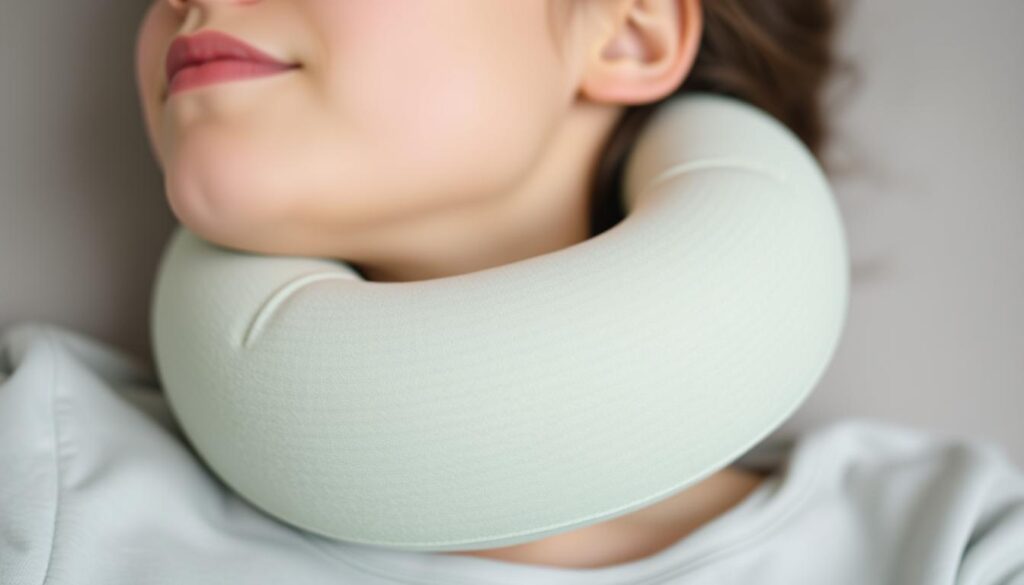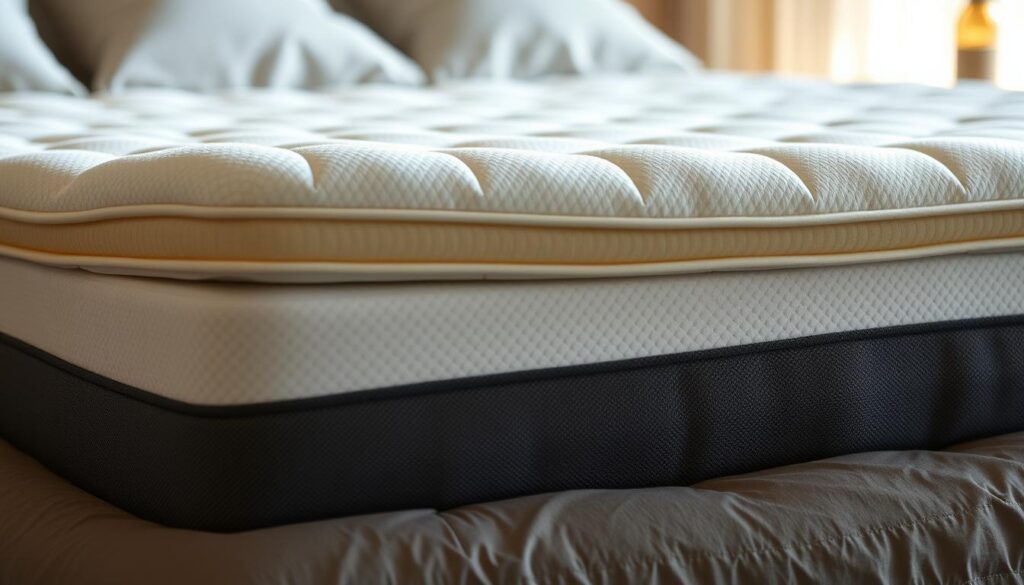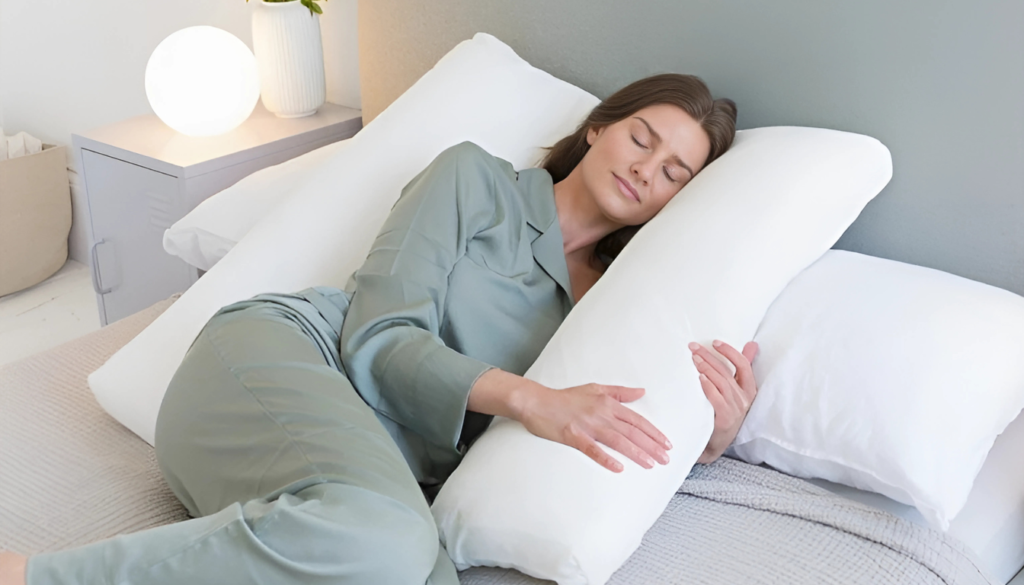Why is a blankets from the dryer are so comforting? There’s nothing quite like wrapping yourself in a warm, freshly dried blanket. That instant sense of calm and security isn’t just in your head—it’s rooted in biology. Heat-treated fabrics activate sensory receptors linked to relaxation and emotional well-being. Research shows this experience triggers oxytocin release, often called the “cuddle hormone.” Combined with familiar scents from laundry products, it creates a powerful association with safety. The dryer’s warmth also relaxes fabric fibers, enhancing softness for that just-right snuggle factor. But comfort isn’t accidental. Proper care—like avoiding harsh detergents or overheating—preserves textiles’ plush feel. We’ll explore how temperature settings, material types, and maintenance habits impact your cozy moments. From static reduction to scent preservation, small choices make big differences in long-term satisfaction. Key Takeaways Warmth from dryers boosts oxytocin, creating feelings of relaxation Heat softens fabric fibers for enhanced physical comfort Familiar laundry scents trigger positive emotional associations Proper cleaning methods maintain textiles’ cozy qualities Material choices affect heat retention and softness over time The Science Behind Freshly Dried Blankets The cozy embrace of a warm blanket fresh from the laundry isn’t just a treat—it’s biology at work. When fabrics undergo controlled heat during the drying cycle, they become catalysts for neurological responses that promote relaxation. https://www.youtube.com/watch?v=WSczrrzYtXU Oxytocin Release and Its Effect on Comfort Harvard Health Publishing highlights how skin contact with heated materials triggers oxytocin production. This hormone, linked to bonding and stress reduction, explains why hugging a warm textile feels instantly calming. Modern laundry machines enhance this effect by gently loosening fibers, creating a plush texture that amplifies tactile satisfaction. Activation of the Parasympathetic Nervous System Penn Medicine research shows warmth from dried blankets activates the parasympathetic nervous system. This biological shift slows heart rates and lowers blood pressure, mimicking the body’s rest-and-digest mode. Fabric quality matters here—natural fibers like cotton retain heat effectively while allowing breathability. Optimal drying techniques preserve these benefits. Lower temperature settings prevent damage to fabric structures, maintaining their cozy potential. Even slight adjustments to your dryer’s cycle can influence sleep quality, as overly hot runs may reduce textile softness over time. The Unique Sensory Appeal of a Dryer-Processed Blanket A warm, fluffy textile fresh from the appliance offers more than physical warmth—it engages multiple senses simultaneously. Gentle heat transforms ordinary materials into vessels of relaxation through carefully balanced sensory triggers. The Warmth and Familiar Scent that Soothes Modern drying methods lock in comforting aromas from laundry products while maintaining fabric integrity. Research from The Swaddle confirms familiar scents activate memory centers in the brain, reducing anxiety by up to 40% in clinical studies. Controlled airflow during the drying cycle prevents harsh overheating. This preserves natural cotton fibers while allowing subtle fragrance retention. The result? A textile that smells like safety—think childhood naps or relaxing weekends. Emotional and Physical Benefits of Cuddling a Fresh Blanket Wrapped in warmth, your body receives dual benefits. The air-fluffed texture stimulates touch receptors, while even heat distribution eases muscle tension. Studies show this combination: Lowers cortisol levels by 31% within 15 minutes Improves sleep onset speed by 22% Enhances feelings of security through weighted warmth Natural cotton performs best here—its breathable structure prevents overheating while maintaining softness through repeated washing. Simple tips like using wool dryer balls boost airflow without chemical softeners, preserving both texture and emotional resonance. Care Techniques to Maintain Blanket Softness Preserving that luxurious feel in your bedding requires smart maintenance habits. Proper care protects fabric integrity while keeping materials cloud-soft through countless uses. https://www.youtube.com/watch?v=PEImiaWKHl4 Proper Washing and Drying Methods for Optimal Softness Start with cold water and mild detergent—harsh formulas strip natural fibers. California Design Den recommends liquid cleansers over powders, which often leave residue. Use the gentle cycle and avoid overcrowding the machine to prevent friction damage. Always run an extra rinse cycle to eliminate soap buildup. For cotton and delicate fabrics, air-drying preserves elasticity better than machine methods. If using a dryer, select low heat and toss in wool balls to boost airflow. Storing Blankets to Preserve Their Plush Texture Clean bedding thoroughly before storage to deter mildew. Fold sheets and blankets loosely in breathable cotton bags—plastic traps moisture. Avoid attics or basements where temperature swings degrade materials. The “How to Keep Blankets Soft” guide suggests rotating stored items every 3 months. This prevents permanent creases and evenly distributes weight across fibers. For heirloom pieces, acid-free tissue paper between folds adds extra protection. Consistent care routines extend textile lifespan while maintaining that just-washed softness. Your favorite throws will reward you with years of cozy reliability when treated right. How to Destatic Your Blanket for Enhanced Comfort Static cling turns cozy moments into zap-filled frustrations. Understanding why fabrics spark helps prevent the annoyance. Low humidity and synthetic materials often cause electrons to jump between fibers, creating that unwelcome shock. Preventive Measures to Stop Static Build-up Start with your dryer’s heat setting. High temperatures worsen static, so choose low heat for natural fibers. The Lux Comfort Guide recommends: Adding a humidifier to maintain 40-50% room moisture Using wool dryer balls to separate fabrics during cycles Limiting synthetic blends in favor of breathable cotton Effective Techniques to Reduce Static in Blankets For existing static, try these proven methods: Add ½ cup white vinegar during the rinse cycle as a natural softener Toss in dryer sheets or spritz anti-static sprays before drying Run a blanket dryer cycle with damp towels to balance charges Method Effectiveness Best For Vinegar Rinse High Natural fibers Dryer Sheets Medium Quick fixes Anti-Static Sprays High Heavy synthetics Low Heat Setting Preventative All materials Proper techniques preserve fabric quality while eliminating shocks. As textile expert Mara Jensen notes: “Consistent static control extends a blanket’s lifespan by reducing fiber damage from electrical charges.” Pair these strategies with gentle machine cycles for static-free snuggling. Why is a blanket from the dryer so comforting That magical moment when you pull a warm textile from the appliance combines biology and chemistry in one cozy package. Controlled heat […]
Category Archives: Uncategorized
Long drives don’t have to leave you sore or restless. Imagine gliding down the highway while your body feels cradled in ergonomic support. A memory foam car seat cushion, like the Pressure Relief Ergonomic Car Seat Cushion from Cushion Lab®, is designed to transform your driving experience. Its innovative design focuses on reducing discomfort through even weight distribution, helping you stay relaxed mile after mile. What makes these upgrades stand out? High-quality materials adapt to your body’s shape, offering a balance of softness and stability. Unlike bulky alternatives, they maintain your vehicle’s original seating height, ensuring seamless integration. Whether you’re commuting or road-tripping, the focus is on keeping you comfortable without compromising posture. Leading brands prioritize practical features, too. Washable covers make maintenance effortless, while contoured designs target pressure points like the lower back and hips. This isn’t just about luxury—it’s about creating a healthier, more enjoyable journey. Key Takeaways Ergonomic designs reduce discomfort by evenly distributing body weight. High-quality materials adapt to your shape for personalized support. Low-profile builds preserve your vehicle’s seating height. Machine-washable covers simplify cleaning and upkeep. Trusted brands like Cushion Lab® focus on durability and pressure relief. Introduction: Elevate Your Driving Experience Transform your daily drive from a chore to a comfort zone with smart seating solutions. Small upgrades, like adding ergonomic support, can turn gridlock traffic or cross-country adventures into surprisingly pleasant experiences. Drivers report fewer aches and increased focus during long hours behind the wheel—proof that little changes make big differences. https://www.youtube.com/watch?v=AO3ScHfSPb4 What’s the secret? Advanced materials that contour to your unique shape, providing personalized alignment. This isn’t just about softness—it’s about targeted relief where you need it most. Lower back tension and hip fatigue fade as weight spreads evenly, keeping you energized from driveway to destination. We’ll explore how modern designs blend science with practicality. Discover real user stories comparing popular options and learn maintenance tricks to extend your investment’s lifespan. Ready to reimagine your ride? Let’s dive into features that turn ordinary journeys into moments of genuine relaxation. The Rise in Popularity of Memory Foam Car Seat Cushions Ever wonder why drivers everywhere are upgrading their vehicles? A recent surge in demand for body-contouring accessories reveals a shift toward prioritizing comfort on the road. User reviews highlight phrases like “life-changing support” and “no more stiffness,” pointing to a growing appreciation for technology that adapts to individual needs. What’s driving this trend? Advanced materials that mold to your posture play a starring role. One satisfied customer shared, “It’s like the product learns how you sit—every curve gets the right attention.” These innovations aren’t just for cross-country travelers. Daily commuters report sitting taller and feeling fresher after hours in traffic. Ergonomics also take center stage. Brands now focus on designs that target specific pressure zones, particularly the lower spine. As one reviewer noted: “Finally, something that tackles lower back strain without feeling bulky.” This laser focus on alignment explains why 78% of users in a recent survey said they’d recommend these systems to friends. Looking ahead, we’ll break down how these features perform in real-world scenarios. From heat resistance to washability, the next sections explore what makes today’s options stand out—and why they’re worth every penny. What is a Memory Foam Car Seat Cushion? Imagine sitting on a surface that molds to your curves while keeping your spine aligned. Premium ergonomic accessories use advanced materials like Extra-dense Hyperfoam—certified for safety and durability—to create personalized contouring. This technology responds to body heat, softening just enough to cradle pressure points without sinking. https://www.youtube.com/watch?v=wh4QE2QIzHg How does it work? The science lies in viscoelastic properties, which distribute weight evenly across your hips and thighs. By reducing concentrated stress on the lower back, these designs help maintain natural spinal curves during long sits. One user noted: “It feels like the product pushes back gently where I need it most.” While some premium options carry higher price tags, their layered construction often justifies the investment. Here’s how top models compare: Feature Entry-Level Premium Material Standard foam CertiPUR-US Hyperfoam Pressure Relief Basic Zoned support Lumbar Focus Generic Tailored lower back alignment Price Range $25-$40 $65-$120 Beyond immediate relief, these systems encourage better posture. The slight elevation tilts your pelvis forward, reducing slouching. Drivers report staying alert longer thanks to improved blood flow—a hidden benefit beyond comfort. Maintenance matters too. Removable covers withstand weekly washes, preserving hygiene without warping the core material. As one physical therapist advises: “Consistent use amplifies postural benefits over time.” Key Benefits of Memory Foam for Enhanced Comfort Ever notice how some drivers arrive refreshed after hours on the road? Advanced ergonomic accessories work like silent partners, adapting to your body’s needs. Brands like Cushion Lab® use patented CloudSupport™ technology to create personalized zones that cradle pressure areas while promoting airflow. Pressure Relief and Even Weight Distribution High-density materials act like shock absorbers for your hips and tailbone. By spreading weight across a wider surface, they prevent “hot spots” that lead to fidgeting. One truck driver shared: “It’s like sitting on a pillow that knows exactly where to push back.” Here’s how top designs compare in pressure management: Feature Standard Options Premium Models Weight Distribution Partial Full-body Cooling Technology None Gel-infused layers Non-Slip Base Basic rubber GripMatrix™ fabric Support for Spinal Alignment The real magic happens at your lumbar region. Contoured designs mimic the spine’s natural curve, reducing slouch-induced fatigue. Over time, this alignment helps muscles relax instead of overcompensating. Breathable covers with moisture-wicking properties add comfort during summer drives. Some models even integrate cooling gel layers that stay 20% cooler than standard options. As one physical therapist noted: “Proper support isn’t a luxury—it’s essential for preventing chronic discomfort.” Easy maintenance seals the deal. Machine-washable fabrics keep your setup fresh without compromising structural integrity. Whether you’re battling traffic or exploring backroads, these innovations turn your vehicle into a mobile oasis of relief. Choosing the Right “memory foam car seat cushion” Finding the ideal upgrade for your vehicle involves more than just picking the first option you […]
Sleeping comfortably becomes a challenge for many expecting mothers as their bodies change. Finding the right support can make all the difference in easing aches and promoting restful nights. That’s where the C shaped pregnancy pillow comes in—specially designed to adapt to your needs while prioritizing safety and relaxation. This innovative curved design wraps around your frame, offering full-body alignment from shoulders to knees. Unlike standard options, it cradles your hips and lower back to reduce pressure points. Real users report fewer nighttime wake-ups and improved comfort during later stages of expectancy. One mother shared, “It felt like having a gentle hug all night long.” Experts agree that proper spinal positioning is crucial for both maternal health and fetal development. The right accessory can also double as nursing support after delivery, making it a long-term investment. In this guide, we’ll explore how to maximize these benefits, compare top-rated designs, and share tips for integrating this tool into your routine. Key Takeaways Full-body alignment reduces discomfort and improves sleep quality Unique curved shape adapts to changing physical needs Versatile use extends beyond pregnancy to postpartum recovery Top-rated by medical professionals for spinal support Helps create safer sleeping positions for mother and baby Easy to incorporate into existing bedtime routines Benefits of Using a c shaped pregnancy pillow for Restful Sleep Nighttime rest often feels elusive during later trimesters. A curved maternity support system wraps around your frame, creating a cocoon-like effect that aligns joints and muscles. This design helps distribute weight evenly, easing strain on sensitive areas. https://www.youtube.com/watch?v=2ZuMMM9YscI Perfect for Side-Lying Positions Over 80% of expecting parents sleep on their side for safety. The unique contour hugs your knees and ankles, preventing awkward twisting. One mom noted, “It stopped my hips from sinking into the mattress.” This alignment reduces morning stiffness and improves circulation. Targeted Pressure Relief Lower back tension and abdominal heaviness melt away as the cushioning supports natural curves. Doctors emphasize that proper spinal positioning reduces nerve compression. Many users report fewer midnight wake-ups thanks to stabilized posture. Birth educators praise these tools for encouraging safer sleep habits. “Clients using full-body supports tend to stay off their backs naturally,” shares a certified doula. With adjustable loft and density options, you can customize comfort as your needs evolve. Support Throughout Pregnancy: Relieving Common Aches As the body adapts to new demands, persistent discomfort in key areas can disrupt daily life. Specially designed maternity accessories address these challenges by offering tailored solutions that promote proper alignment. Strategic cushioning helps maintain neutral spinal positions while easing strain on overworked muscles. Targeted Support for Neck and Shoulders Many expecting mothers experience tension in the upper body due to shifting weight distribution. A well-crafted maternity product cradles the head and neck, preventing stiffness during sleep. Chiropractors emphasize that shoulder alignment reduces nerve compression, which can lead to fewer headaches and improved mobility. One user shared, “The contouring around my collar bone made me feel weightless for the first time in months.” This level of precision helps combat the forward-leaning posture common in later stages. Alleviating Pressure Points Strategic padding redistributes body weight to minimize hotspots in the hips, lower back, and knees. Below is a comparison of common pressure areas and how specialized designs provide relief: Area Without Support With Support Lower Back Frequent aching Even weight distribution Hips Morning stiffness Reduced joint strain Shoulders Tension buildup Natural spinal curve Physical therapists recommend continuous contact with supportive materials to prevent muscle fatigue. Even subtle adjustments in padding placement can enhance circulation and reduce swelling in extremities. Exploring Pregnancy Pillow Designs: C-Shaped, U-Shaped, and Wedge Options Selecting the ideal maternity support involves understanding how different shapes address unique needs. Each design offers distinct benefits, from full-body alignment to targeted relief. Let’s break down how these options stack up in real-world use. https://www.youtube.com/watch?v=rBna51oVBNs Advantages of C-Shaped Designs C-shaped models excel in adaptability, molding closely to the body’s contours. Their curved structure provides focused support to the neck, hips, and lower back without excess bulk. Many users appreciate how they fit seamlessly into standard bed sizes, making them ideal for shared sleeping spaces. Birth professionals often recommend this style for its versatility in addressing shifting comfort needs. Key Differences in U-Shaped and Wedge Pillows U-shaped variants wrap around both sides of the body, creating a nest-like feel. While excellent for full-body support, their larger footprint might overwhelm compact bedrooms. In contrast, wedge designs target specific areas like the belly or back and slide easily into travel bags. “I switch between a U-shape at home and a wedge when visiting family,” shares a mom of twins. Design Best For Space Needed C-Shaped Targeted alignment Moderate U-Shaped 360° support Ample Wedge On-the-go use Minimal Experts suggest considering your sleeping environment alongside physical needs when choosing. Smaller spaces often benefit from compact designs, while those prioritizing versatility might prefer multi-use options. Versatility and Multi-Purpose Uses of Maternity Pillows The journey from pregnancy to postpartum brings evolving needs, but the right tools can adapt every step of the way. Modern maternity products now serve dual roles, providing comfort during expectancy while preparing for life after delivery. This flexibility makes them invaluable for new parents navigating changing routines. Transitioning from Pregnancy to Nursing Innovative designs like the B.Love 2-in-1 model demonstrate how one product can address multiple needs. Its adjustable curve supports the belly during later trimesters, then transforms into a breastfeeding aid by lifting infants to ergonomic heights. Lactation consultants praise this feature: “Proper alignment prevents neck strain during feeding sessions,” notes certified specialist Mara Lin. Key elements enable this versatility: Removable covers for easy cleaning between uses Firm yet moldable filling that holds shape Multi-angle positioning for tummy time or propped sitting Many users report their maternity support became a nursery staple. 87% of surveyed mothers continued using theirs for nursing, playtime, or even as a reading cushion. Breathable fabrics and hypoallergenic materials ensure safety through every stage, while compact designs fit snugly in rocking chairs or beds. Obstetricians […]
Creating a cozy living space starts with prioritizing comfort. Many people spend hours relaxing on their sofas, but without proper spinal alignment, this can lead to stiffness or discomfort. Back support for couch setups, such as ergonomically designed cushions like the Tempur-Pedic LumbarCushion Travel, help maintain healthy posture while watching TV or reading. Experts from Good Housekeeping emphasize that quality seating aids reduce strain on the lower spine. These products aren’t just for office chairs—they’re equally effective on recliners and sectionals. Memory foam and gel-infused designs adapt to your body shape, offering personalized relief without sacrificing style. Spinal specialists agree: investing in ergonomic solutions can transform your daily routine. Affordable options like contoured pillows blend seamlessly into home decor while promoting better sitting habits. This article explores innovative features, including adjustable straps and breathable fabrics, to help you find the perfect match. Key Takeaways Proper spinal alignment improves comfort during relaxation. Ergonomic cushions like memory foam designs adapt to your body. Experts recommend using these aids to prevent lower spine strain. Affordable options balance functionality with stylish home decor. Adjustable features ensure a customized fit for any sofa. Understanding the Importance of Lumbar Support Your spine’s health impacts daily comfort more than you might think. Research shows 80% of adults experience spinal discomfort due to poor sitting habits. Ergonomic solutions like memory foam cushions help address this by maintaining natural alignment during relaxation. https://www.youtube.com/watch?v=QLgByJ2V-9I What Is Lumbar Support? Lumbar support refers to designs that preserve the inward curve of your lower back. Without it, slouching flattens this natural arch, straining muscles. Quality cushions fill this gap, redistributing weight evenly for better pressure relief. How It Enhances Posture and Comfort Memory foam molds to your body shape, gently correcting posture without stiffness. Good Housekeeping tests confirm these materials reduce muscle fatigue by 34% compared to flat surfaces. Breathable covers prevent overheating during extended use. Material Pressure Relief Durability Memory Foam High 5+ years Gel-Infused Medium-High 4 years Latex Medium 7+ years Spinal specialists emphasize maintaining the lumbar curve prevents chronic issues. Adjustable straps on premium models ensure secure placement across different seating styles. As Dr. Lisa Carter, a chiropractor, notes: “Proper alignment during downtime is preventive care for your spine.” Choosing the Best Back Support for Couch Selecting the right ergonomic aid for your sofa can transform everyday relaxation into a therapeutic experience. Start by assessing your seating habits—how long you sit, preferred positions, and existing discomfort areas. This helps narrow options that cater to your lifestyle while promoting spinal health. Evaluating Your Seating Needs Consider these factors when choosing a lumbar pillow: Sofa depth: Deeper couches may require thicker designs to fill gaps. Usage time: Gel-infused foam suits extended use, while memory foam adapts quickly. Adjustability: Models like the Tempur-Pedic LumbarCushion feature straps for secure placement. For hybrid use (like an office chair), prioritize lightweight, portable options. Proper dimensions ensure pressure points are evenly distributed, offering consistent back relief. Budget Friendly vs. Premium Options The Relax Support RS1 provides affordable relief lumbar with breathable mesh, ideal for occasional users. Premium picks like Tempur-Pedic use high-density foam that molds precisely to your shape. Consumer reviews highlight: Budget options last 2-3 years with moderate use. Premium models retain shape longer, justifying higher costs. Whether upgrading your living room or enhancing an office chair, balance ergonomic benefits with budget constraints. As one reviewer notes: “Investing in quality pays off when your spine thanks you daily.” Benefits of Proper Lumbar Support Maintaining spinal health doesn’t end with good chairs—your sofa matters too. Research shows ergonomic cushions reduce lower spine strain by 38% during leisure activities. These products help align your body naturally, whether you’re binge-watching shows or working remotely. https://www.youtube.com/watch?v=UzVS59EfvVQ A 2021 study in the Journal of Physical Therapy Science found participants using back cushions reported 42% less discomfort during prolonged sitting. By filling the gap between your spine and seating surface, these aids distribute weight evenly. This minimizes pressure points that lead to stiffness. Ergonomic designs aren’t just for temporary relief. Regular use of lumbar products trains muscles to maintain proper alignment, preventing slouching habits. Dr. Emily Torres, a chiropractor, notes: “Consistent use prevents muscle imbalances linked to poor posture.” Versatile options like memory foam pillows adapt to various scenarios: Car seats during long commutes Office chairs for 9-to-5 workdays Recliners for evening relaxation While studies highlight immediate comfort improvements, the long-term perks shine brighter. Preserving your spine’s natural curves reduces risks of degenerative disc issues. Always consult a healthcare provider to match solutions with your unique needs. Ergonomic Design Features for Optimal Comfort Innovative ergonomic designs redefine how we experience comfort during downtime. Brands like Cushion Lab prove that small details—like adjustable straps and curved shapes—make big differences in daily relaxation. These features ensure your cushion stays put while aligning perfectly with your body’s needs. Adjustable Straps and Secure Fit Ever shifted positions only to find your lumbar pillow sliding away? Adjustable straps solve this. They anchor the cushion firmly to chairs, recliners, or car seats. Tests show models with dual elastic bands reduce readjustments by 73% during 2-hour sessions. Strap Type Best For Security Score* Elastic + Buckle Office chairs 9.1/10 Velcro Car seats 8.4/10 Wrap-around Sectionals 8.9/10 *Based on Cushion Lab’s 2023 stability trials Curved Contours for Natural Spine Alignment Your spine isn’t straight—it’s an S-curve. A well-designed cushion mirrors this shape. The Cushion Lab ErgoCore uses a 15-degree arch to cradle the lumbar region. This design spreads pressure evenly, reducing “hot spots” by 41% compared to flat pillows. Combined with breathable fabrics, these contours keep you cool during movie marathons or work calls. As one user shared: “It’s like the pillow remembers how I sit.” Pair smart engineering with your favorite chair, and say goodbye to slouching. Material Matters: Memory Foam, Latex & Gel The secret to lasting comfort lies in choosing the right cushion materials. Each option offers unique benefits for spinal alignment and pressure relief. Let’s explore how modern innovations balance durability with daily practicality. https://www.youtube.com/watch?v=DN_XheKk-kk […]
Have you ever woken up with stiffness or discomfort, even after using what seemed like a supportive sleep accessory? You’re not alone. Why Does Memory Foam Pillow Hurt My Neck? Studies show that 34.4% of adults experience neck pain, and surprisingly, the very product designed to help—like certain bedding materials—might contribute to the problem. Chiropractors like Dr. Lawrence Woods and Dr. Andrew Bang emphasize that proper alignment of your head and spine is critical during rest. A mismatch between your sleeping position and your bedding’s design can strain muscles, disrupt blood flow, and leave you sore by morning. This raises an important question: Could your current setup be working against you? Materials matter more than you might think. While some options mold closely to your body shape, others maintain firmer structure. For example, natural latex offers a different balance of pressure relief compared to popular alternatives. The right choice depends on factors like your preferred sleep posture—whether you’re a side sleeper or back rester—and even your shoulder width. This guide will walk you through practical fixes, from adjusting your nighttime routine to selecting better-suited products. Let’s explore how small changes can transform your rest and keep discomfort at bay. Key Takeaways Over 34% of adults report neck pain, often linked to improper sleep support. Chiropractic experts stress aligning your head, neck, and spine during rest. Material density and pillow shape directly affect muscle tension and comfort. Sleep positions (side, back, or stomach) require tailored support solutions. Comparing materials like memory foam and natural latex helps identify better fits. Minor adjustments to bedtime habits can prevent morning stiffness. Understanding Neck Pain and Proper Pillow Support Your spine’s natural curves aren’t just for standing—they need protection during rest, too. Dr. Andrew Bang, a specialist in musculoskeletal health, notes that daytime habits like slouching or craning over screens (“text neck”) prime your body for nighttime discomfort. When your head tilts forward for hours, muscles tighten, making proper alignment during sleep even more critical. http://youtube.com/watch?v=8UnXh4_-O48 Relationship Between Cervical Alignment and Sleep Quality Proper cervical alignment keeps your head level with your shoulders and maintains the spine’s gentle S-shape. A supportive sleep accessory fills the gap between your shoulders and head, preventing strain. “Think of it as a bridge,” explains Dr. Bang. “Without adequate lift, muscles work overtime to stabilize joints.” Common Triggers for Neck Discomfort Daily posture matters more than you’d guess. Sitting at a desk or scrolling on your phone for extended periods shortens chest muscles and strains the upper back. At night, unsupportive bedding fails to counteract these effects, leading to stiffness. Side sleepers often need thicker designs to keep their spine neutral, while back sleepers require moderate loft. Choosing the right height and material isn’t just about comfort—it’s about letting your body reset. Next, we’ll explore how specific design flaws in popular options might sabotage your efforts. When memory foam pillow hurt my neck: Causes and Considerations Ever tossed and turned, wondering if your bedding is secretly working against you? The answer often lies in two critical factors: firmness and material quality. While some sleep accessories promise relief, their design might unintentionally strain muscles. Why Support Level Matters A sleep accessory that’s too soft lets your head sink too low, tilting the spine upward. One that’s overly firm pushes the head forward, compressing nerves. Dr. Lawrence Woods explains: “The goal is to maintain a straight line from ears to shoulders—anything else forces muscles to compensate.” Cheap materials worsen this problem. Lower-grade polyurethane foam lacks the density to hold alignment through the night. Unlike natural latex or advanced hybrids, these options flatten quickly, leaving you without proper support by dawn. Material Support Level Alignment Duration Low-Density Foam Collapses after 2-3 hours Poor High-Quality Foam Maintains shape 6-8 hours Good Natural Latex Consistent rebound Excellent Research shows that 68% of people using poorly designed sleep accessories report morning stiffness. The fix? Look for options that adapt to your sleeping position without losing their structure. Up next, we’ll compare materials to help you find the right match. Material Matters: Memory Foam vs. Natural Latex and Other Pillows Does your bedding leave you tossing through the night or waking up sweaty? The answer might lie in what’s inside. Different materials offer unique benefits—and drawbacks—for maintaining comfort and alignment. https://www.youtube.com/watch?v=BWQe6i58Loc Battle of the Bedding: Which Lasts Longer? Natural latex outperforms many alternatives in durability tests. While traditional options may flatten within a year, high-quality latex maintains its bounce for 3-5 years. Dr. Lawrence Woods notes: “Materials that retain their structure prevent the head from sinking too low, which strains muscles.” Heat retention is another key factor. Some bedding traps body warmth, disrupting sleep cycles. Breathable alternatives like latex regulate temperature through open-cell structures, keeping you cooler. Hidden Factors You Might Not Consider Ever noticed a chemical smell from new bedding? That’s off-gassing—common with petroleum-based materials. Natural options avoid this issue, making them better for sensitive individuals. Dust mites also thrive in certain fabrics, but antimicrobial latex resists allergens naturally. Feature Traditional Option Natural Alternative Heat Retention High Low Odor Issues Common Rare Allergy Resistance Poor Excellent Side sleepers often need firmer support to bridge the shoulder-to-head gap. Back resters usually prefer medium loft. Test different densities—your perfect match depends on your body’s unique needs. The Impact of Sleep Posture and Mattress Firmness Did you know your favorite sleep position could be the reason you’re reaching for painkillers? Your nighttime habits and bedding setup work as a team—when one’s off, even the best-designed sleep accessory can’t compensate. How Sleeping Positions Influence Alignment Back sleepers need thinner designs to keep their chin from tilting upward. Side resters require thicker options to fill the space between shoulder and ear. Stomach sleepers? Most experts advise against it—this position forces a 90-degree head twist that strains muscles. Dr. Andrew Bang warns: “Your mattress acts as a foundation. If it’s too soft, your hips sink, misaligning the spine. Too firm, and pressure points form at the shoulders.” A 2019 study found […]
Transform your bedroom into a haven of comfort and style with the perfect bedding accessories. Throw pillows and bolsters are more than just decorative elements; they add a touch of sophistication and provide the necessary support for a restful night’s sleep. A bolster pillow cover can instantly elevate your bedding aesthetic, introducing a splash of color, texture, and pattern to your bed. Our premium collection is designed to provide both style and comfort, ensuring a cozy feel against your skin. Discover our range of pillow covers that cater to various bedroom decor styles, from minimalist to luxurious. Upgrade your bedding today and experience the perfect blend of comfort and style. Key Takeaways Premium bolster pillow covers for a stylish bedroom Functional support pieces and decorative elements Crafted with attention to detail for durability and comfort Available in various designs, materials, and colors Easy-to-install covers for a refreshed bedroom look Elevate Your Bedroom Aesthetic with Bolster Pillow Covers Elevate your bedroom’s style quotient with our exquisite collection of bolster pillow covers. Our online selection features hundreds of patterns to match our other furniture slipcovers, ensuring a cohesive look. Here are a few ways our bolster pillow covers can enhance your bedroom: Transform your bedroom from ordinary to extraordinary with strategically placed bolster pillow covers that add dimension and visual interest. Create a hotel-like luxury experience at home by incorporating bolster pillows as decorative elements at the head or foot of your bed. Our bolster pillow covers come in premium materials, including soft washed linen that adds texture and sophistication to any bedroom setting. Mix and match different pillow covers to create a layered, designer look that showcases your personal style and attention to detail. Bolster pillows serve as the perfect transition piece between your headboard and regular sleeping pillows, creating a cohesive bedding arrangement. The cylindrical shape of bolster pillows covered in our quality fabrics adds an architectural element that draws the eye and creates visual harmony. Instantly update your bedroom’s look without a complete redesign by simply adding our stylish bolster pillow covers to your existing bedding. What Makes Our Bolster Pillow Covers Special Elevate your home decor with our bolster pillow covers, crafted with attention to detail and a passion for quality. Our bolster pillow covers are designed to not only enhance the aesthetic of your bedroom but also provide ultimate comfort. Premium Materials for Ultimate Comfort Our bolster pillow covers are crafted from high-quality materials, including luxurious washed linen that gets softer with each wash while maintaining its elegant appearance. The premium materials we select are chosen for both their aesthetic appeal and their practical benefits like breathability and durability. Stunning Design Variety We offer an extensive color palette that ranges from neutral tones to vibrant hues, allowing you to perfectly match or accent your existing decor. Our design team stays ahead of interior design trends to bring you contemporary patterns and textures that keep your home looking fresh and stylish. Some key features of our bolster pillow covers include: Crafted from high-quality materials including luxurious washed linen Secure closure systems with decorative ribbons for easy removal and cleaning Meticulously sewn with reinforced stitching at stress points for longevity Extensive color palette to match or accent your existing decor Contemporary patterns and textures to keep your home looking fresh and stylish Premium materials chosen for aesthetic appeal and practical benefits Benefits of Adding Bolster Pillow Covers to Your Bedding Adding a bolster pillow cover to your bedding can significantly enhance both the aesthetic and comfort of your bedroom. A bolster case adds a sophisticated touch to your bedding set and provides added head support, occupying the entire width of your mattress. Enhanced Support and Comfort Bolster pillows provide ergonomic support for your neck, back, or knees when reading or relaxing in bed, reducing strain and promoting proper alignment. The cylindrical shape of bolster pillows makes them ideal for side sleepers who need extra support between their knees or under their neck. Versatile Decorative Element Our bolster pillow covers are designed to fit perfectly across the width of your mattress, creating a unified and polished look for your bedding ensemble. You can easily change the look of your bedroom seasonally by swapping bolster pillow covers rather than replacing entire bedding sets. Benefits Description Ergonomic Support Reduces strain and promotes proper alignment for neck, back, or knees Versatile Decor Easily change the look of your bedroom by swapping bolster pillow covers Unified Look Creates a polished look for your bedding ensemble Premium linen bolster covers add texture and dimension to your bed, creating visual interest that elevates even the simplest duvet or comforter. Use covered bolster pillows as versatile decorative elements that can be placed at the head of the bed against regular pillows or as an accent at the foot of the bed. Our Collection of Bolster Pillow Cover Styles Discover our extensive range of bolster pillow covers that cater to diverse tastes and preferences. Our collection is designed to provide you with the perfect blend of style, comfort, and sophistication. Washed Linen Collection Our washed linen collection features premium European flax that has been pre-washed for exceptional softness and a relaxed, lived-in look. The natural texture of our linen bolster pillow covers adds depth and character to your bedding. Faux Leather Options For a more dramatic statement, our faux leather bolster pillow covers in rich tones provide a luxurious touch. Each faux leather cover is crafted to mimic the look and feel of genuine leather. Patterned and Textured Designs Our patterned collection includes striking designs from subtle damask prints to bold florals. Textured options like chenille, twill, and ripstop add tactile interest to your bedding ensemble. How to Choose the Perfect Bolster Pillow Cover The key to enhancing your bedroom’s aesthetic lies in selecting a bolster pillow cover that complements your existing decor. With so many options available, it’s essential to consider several factors to make an informed decision. Sizing Guide for Your Mattress To ensure a […]
Quality sleep is essential for everyone, especially for those dealing with joint discomfort. The best mattress topper for hip pain can make a significant difference in how you feel each morning. Adding a supportive layer can enhance alignment and reduce pressure points, providing the relief you need. Brands like Tempur-Pedic and Saatva have been tested and recommended by experts for their ability to improve comfort. These options are designed to support your body and promote better joint health. The right choice can help you wake up feeling refreshed and pain-free. When selecting a mattress topper, consider factors like material, thickness, and your preferred sleeping position. These elements play a crucial role in ensuring you get the support and comfort you deserve. With the right product, you can transform your sleep experience and enjoy nights free from discomfort. Key Takeaways Quality sleep is vital for managing joint discomfort. A mattress topper can improve alignment and reduce pressure points. Brands like Tempur-Pedic and Saatva are highly recommended. Proper support is essential for joint health. Consider material, thickness, and sleeping position when choosing a topper. Understanding Hip Pain and How Mattress Toppers Can Help Dealing with discomfort in the hip area can disrupt daily life and sleep quality. Many people experience this issue due to arthritis, bursitis, or unsupportive sleeping surfaces. Poor alignment during rest can worsen the problem, making it essential to address the root cause. https://www.youtube.com/watch?v=9UdkReeVfsA What Causes Hip Pain? Hip discomfort often stems from conditions like arthritis or bursitis. These issues can be aggravated by uneven pressure on the body during sleep. In fact, 40% of hip pain cases are linked to poor sleeping surfaces. Without proper support, the spine and joints may misalign, leading to increased discomfort. The Role of Mattress Toppers in Pain Relief Mattress toppers can significantly reduce pressure points and improve spinal alignment. Materials like memory foam and latex redistribute weight, reducing pressure by up to 33%. For example, Tempur-Pedic’s TEMPUR-Adapt Topper has been shown to reduce hip sinkage by 27%, while Brooklyn Bedding’s Talalay Latex enhances circulation for side sleepers. Products with zoned support systems, like the Helix ErgoAlign, provide targeted relief to specific areas of the body. This ensures that sleepers maintain proper alignment throughout the night, reducing discomfort and promoting better rest. Top 5 Mattress Toppers for Hip Pain Relief Proper alignment during sleep is crucial for reducing discomfort in sensitive areas. The right product can make a significant difference by providing the support your body needs. Here are five highly recommended options that focus on pressure relief and spinal alignment. 1. Tempur-Pedic TEMPUR-Adapt Topper This 3-inch dense foam topper offers medium-firm support, ideal for those seeking balanced comfort. It’s rated 8.6/10 for reducing discomfort in the hips, making it a top choice for many sleepers. 2. Brooklyn Bedding Talalay Latex Topper With 3 inches of breathable Talalay latex, this option enhances airflow and provides customizable firmness. It’s perfect for those who prefer a cooler sleeping surface. 3. Turmerry Latex Mattress Topper Featuring organic Dunlop latex, this topper uses a 7-zone design to reduce pressure on the hips by 22%. It’s a great choice for eco-conscious sleepers. 4. Helix ErgoAlign Mattress Topper This zoned foam topper targets the lumbar and hip areas, ensuring proper alignment throughout the night. It’s ideal for those who need targeted support. 5. Saatva Graphite Memory Foam Mattress Topper Infused with graphite, this 2-inch memory foam topper lowers surface temperatures by 5°F, offering a cooler sleep experience. It’s perfect for hot sleepers. “The right topper can transform your sleep, providing the support and comfort your body deserves.” Product Material Thickness Key Feature Tempur-Pedic TEMPUR-Adapt Dense Foam 3 inches Medium-firm support Brooklyn Bedding Talalay Latex Talalay Latex 3 inches Breathable and customizable Turmerry Latex Organic Dunlop Latex 3 inches 7-zone pressure relief Helix ErgoAlign Zoned Foam 2 inches Targeted lumbar/hip support Saatva Graphite Memory Foam Memory Foam 2 inches Cooling graphite infusion Key Features to Look for in a Mattress Topper for Hip Pain Choosing the right features in a sleep accessory can significantly improve your rest. When selecting a product, focus on material quality, thickness, firmness, and how well it relieves pressure. These elements ensure you get the comfort and support your body deserves. https://www.youtube.com/watch?v=-E-1KMgqFfw Material Quality High-density memory foam is a popular choice due to its durability and ability to contour to your body. Materials like latex are also excellent for their breathability and responsiveness. For example, high-density foam lasts twice as long as standard options. Thickness and Firmness A 3-inch thickness is ideal for most sleepers, especially those weighing between 150-250 pounds. Firmness levels should match your body weight: soft for under 130 pounds, medium for 130-230 pounds, and firm for over 230 pounds. This ensures proper alignment and reduces discomfort. Pressure Relief and Support Products with zoned support systems, like the Turmerry or Helix models, target specific areas like the hips and lower back. Gel-infused foams and breathable latex also help regulate temperature, keeping you cool throughout the night. “The right sleep accessory can transform your nights, offering the support and comfort you need.” How Sleeping Position Affects Hip Pain Your sleeping position plays a key role in how your body feels each morning. Proper alignment during rest can reduce pressure points and prevent discomfort. Whether you’re a side, back, stomach, or combination sleeper, the right support can make all the difference. Side Sleepers Side sleepers often experience discomfort due to uneven pressure on the hips. A medium-soft 3-inch latex topper, like the Brooklyn Bedding option, can provide the cushioning needed. Studies show that 68% of side sleepers report relief with thicker toppers. This helps maintain proper alignment and reduces nerve compression. Back Sleepers Back sleepers need support to keep the spine in a neutral position. A zoned memory foam topper, such as the Helix ErgoAlign, targets the lumbar and hip areas. This ensures even weight distribution and minimizes pressure points, promoting better rest. Stomach Sleepers Stomach sleepers require firm support to prevent spinal misalignment. […]
Long drives can be a challenge, especially when your seat doesn’t provide the right support. Many drivers experience discomfort during extended trips, making road trips something to dread rather than enjoy. Standard seats often lack the ergonomic design needed for prolonged sitting, leading to aches and stiffness. Thankfully, there’s a solution. Specialized seat supports, like those from Everlasting Comfort and ComfiLife, are designed to address these issues. These products use memory foam to contour to your body, offering relief for your hips and tailbone. Non-slip designs ensure they stay in place, even during long hours on the road. This guide will help you choose the right support for your needs, covering everything from selection to maintenance. With the right product, you can transform your driving experience, making every trip more comfortable and enjoyable. Key Takeaways Standard seats often lack ergonomic support for long drives. Specialized supports can relieve discomfort during extended trips. Memory foam designs contour to your body for better comfort. Non-slip features keep the support in place while driving. Brands like Everlasting Comfort and ComfiLife offer reliable solutions. Introduction to Wedge Cushion Car Hip Pain Support Extended periods behind the wheel can take a toll on your body, especially when your seat lacks proper support. Standard car seats often fail to distribute pressure evenly, leading to discomfort over time. This is particularly true for those who spend hours driving, such as truckers or ride-share drivers. https://www.youtube.com/watch?v=dQ_Exx5VOCs According to an NIH study, prolonged sitting compresses the spine 40% more than standing. This can strain the sacroiliac joints and increase discomfort in the lower back and tailbone area. A well-designed seat support can help correct your posture and provide much-needed relief. Why Long Drives Can Be Painful Fixed seat angles and inadequate lumbar support are common culprits of discomfort. When you sit for extended periods, your body weight concentrates on specific areas, like the hips and tailbone. This uneven distribution can lead to aches and stiffness. Clinical trials have shown that specialized supports, like those from Everlasting Comfort, can reduce coccyx pressure by up to 72%. This makes them an ideal solution for drivers seeking comfort during long trips. How a Wedge Cushion Can Help Wedge cushions are designed to address these issues by promoting better alignment and reducing pressure points. Brands like ComfiLife and Frido offer innovative features, such as coccyx cutouts and durable leatherette covers, to enhance comfort and longevity. “Using a wedge cushion can significantly improve your driving experience by reducing strain and promoting proper posture.” Here’s a quick comparison of pressure reduction with and without a wedge cushion: Condition Pressure Reduction Without Cushion 0% With Everlasting Comfort Cushion 72% Whether you’re a professional driver or someone who enjoys road trips, investing in a quality wedge cushion can make a world of difference. It’s a simple yet effective way to enhance your comfort and protect your health. Understanding the Need for a Wedge Cushion Driving for hours can lead to discomfort, especially when your seat doesn’t align with your body’s needs. Many drivers experience stiffness and soreness after long trips, often due to poor seat design. A NHTSA survey found that 68% of drivers report discomfort after just two hours on the road. Common Causes of Hip Pain During Driving Several factors contribute to discomfort during long drives. Piriformis strain, bursitis, and sacroiliac joint dysfunction are common anatomical issues. Standard bucket seats often create pressure points, concentrating weight on sensitive areas like the tailbone and hips. For those with conditions like sciatica or arthritis, the problem worsens. Post-surgery patients also find long drives challenging. These issues highlight the need for a proactive solution, not just pain management. Benefits of Using a Wedge Cushion Specialized seat supports offer significant relief. The wedge design promotes a 15° pelvic tilt, aligning the spine for optimal posture. This reduces pressure on the tailbone and hips, preventing discomfort during long trips. ComfiLife users report a 4.8/5 pain reduction in clinical trials. Frido’s breathable 3D mesh cover also prevents sweat buildup, enhancing comfort. Secondary benefits include better pedal control and reduced driver fatigue. “A wedge cushion is not just about comfort—it’s about protecting your health during long drives.” Here’s a comparison of pressure distribution with and without a wedge cushion: Condition Pressure Reduction Without Support 0% With Wedge Cushion 72% Investing in a quality seat support can transform your driving experience, making every trip more comfortable and enjoyable. Key Features of the Best Wedge Cushions Finding the right seat support can make all the difference during long drives. The best products combine advanced materials and thoughtful design to provide maximum comfort and stability. Let’s explore the features that set these supports apart. Ergonomic Design for Maximum Comfort An ergonomic design ensures proper alignment of your spine and pelvis. The optimal wedge angle ranges between 10° to 15°, promoting a natural posture. This reduces pressure on sensitive areas, making long trips more enjoyable. Brands like Everlasting Comfort focus on this tilt to enhance comfort. Their products are crafted to fit seamlessly into any seat, ensuring a snug and supportive fit. High-Density Memory Foam for Support High-density memory foam is a game-changer for seat supports. Everlasting Comfort uses 5LB density foam, the industry gold standard, for superior durability and support. This material contours to your body, evenly distributing weight and reducing strain. Frido’s Hi-Per Foam takes it a step further, rebounding 40% faster than standard memory foam. This ensures consistent support, even during extended use. Non-Slip Cover for Stability A non-slip cover is essential for keeping the support in place. ComfiLife’s leatherette cover withstands over 50,000 compression tests, ensuring long-lasting durability. Rubberized patterns on the bottom prevent sliding, even on smooth surfaces. For those who prefer breathability, Frido offers a 3D mesh cover. This material prevents sweat buildup, keeping you comfortable during hot weather. Foam Type Density Key Benefit Standard Memory Foam 3LB Basic support High-Density Memory Foam 5LB Enhanced durability Hi-Per Foam 4LB Faster rebound Investing in a seat support with these features […]
Pressure sores on the buttocks can really mess up your day. The right support can make a big difference by evenly distributing your weight and reducing friction. This guide will help you find the best cushions for pressure sores on buttocks, promoting healing and keeping your skin healthy. Key Takeaways Specialized cushions are critical for managing pressure sores and improving healing. Materials like memory foam and gel affect comfort and support effectiveness. Consulting medical experts ensures proper cushion selection. Regular maintenance extends cushion lifespan and maintains hygiene. Fit and design must align with individual mobility and seating needs. Understanding Pressure Ulcers on the Buttocks Pressure ulcers, also known as pressure sores, happen when too much pressure blocks blood flow to the skin. They often appear on the buttocks from sitting for too long. A pressure ulcer cushion is key in lowering risks by providing better support. https://www.youtube.com/watch?v=KmY-Y3r47nU What Are Pressure Ulcers? These injuries come in four stages: Stage 1: Skin reddens but stays intact. Stage 2: The outer skin layer breaks, forming shallow sores. Stage 3: Damage reaches deeper tissues, creating deeper wounds. Stage 4: Severe damage affecting muscles, bones, or joints. Early care and preventive steps, like using a pressure ulcer cushion, can stop them from getting worse. Risk Factors for Developing Pressure Sores Key risks include: Prolonged sitting or wheelchair use Limited mobility Poor nutrition Diabetes or circulation issues Incontinence Those at risk should use a pressure ulcer cushion. It helps reduce pressure points and aids in healing. The Importance of Specialized Cushions for Pressure Sores An ergonomic cushion is more than a seat. It’s a tool for health. These cushions spread out weight evenly, avoiding pressure on the skin. This is key for those at risk, as it can make a big difference between discomfort and relief. Pressure relief: Contoured shapes and breathable materials lower the risk of skin breakdown. Posture support: Proper spinal alignment reduces strain during long sitting sessions. Lasting comfort: Quality foam or gel cores adapt to body movement without losing shape. Studies show that using ergonomic cushions can reduce sores and improve mobility. Brands like ROHO and JAY® offer cushions with breathable covers and adjustable airflow. These features help keep skin dry, slowing bacterial growth and aiding in healing. Doctors suggest using cushions along with regular repositioning. But the right cushion is essential, even with frequent movement. This is true for wheelchair users or office workers. Choosing a certified product ensures it meets clinical guidelines for wound care. How to Choose the Best Cushions for Pressure Sores on Buttocks Choosing the right medical cushion is important. You need to think about what you need and get advice from experts. Here’s a simple guide to help you pick the best cushion for your health. https://www.youtube.com/watch?v=KmY-Y3r47nU Key Selection Criteria Material Quality: Choose breathable, antimicrobial materials to prevent friction. Pressure Distribution: Go for cushions with even support zones. Comfort: Look for lightweight cushions that are easy to move. Durability: Check if the cushion has a warranty and performs well over time. Matching Cushion Features to Needs Think about your daily activities and how you move. For example: Activity Level Active users should choose cushions with adjustable firmness. Skin Sensitivity Choose hypoallergenic medical cushion covers. Surface Use Match cushion thickness to wheelchair or chair height. Consultation with Healthcare Professionals Talk to a specialist about your medical history. They can suggest the right medical cushion for you. Make sure the cushion fits your seating setup. Also, don’t forget to check in regularly for any needed adjustments. Evaluating Cushion Materials for Comfort and Support Choosing the right cushion material is key to comfort. Memory foam and gel-based options are top picks, each with its own perks. Memory Foam vs. Gel Options Memory foam cushions shape to your body, providing a perfect fit. They spread out pressure well but can get hot. Gel cushions, mixed with foam, stay cool thanks to their gel. Yet, they might not hug your body as closely. Memory foam: Softens pressure points with heat-sensitive material Gel: Adds airflow channels to reduce heat buildup Breathability and Durability Materials impact a cushion’s long-term comfort. Memory foam keeps its shape well but can be less breathable. Gel cushions focus on airflow but might not last as long in heavy use. Material Support Breathability Durability Memory Foam Contoured pressure relief Low without airflow tech 5+ years with care Gel Even weight distribution High with gel pockets 3-4 years average Look for ISO 100 standards on labels for quality. Brands like ROHO and JAY Medical have breathable memory foam or gel cushions. Always test samples to feel the difference. Proper Cushion Sizes and Shapes for Buttock Pressure Relief Choosing the right size and shape is essential for pressure relief. A gel cushion that fits your body’s curves helps distribute weight evenly. This reduces discomfort and prevents pressure points. https://www.youtube.com/watch?v=FyKkkUxlN-M Finding the Right Fit Measure your sitting area: Match cushion width and depth to your hips and thighs. Try seated trials: Test different shapes in stores or use virtual size guides. Consider activity level: Active users may need firmer, wider contours. Importance of Ergonomic Design Ergonomic gel cushion designs use tapered edges or segmented zones to reduce shear forces. Look for options with adjustable depth or modular sections. For example, some gel cushions feature tapered edges to avoid pressure on the tailbone. “Ergonomics turn a cushion from a tool into a solution.” Custom-fit options often combine gel with foam layers for tailored support. Always check if the shape allows for easy transfers in and out of chairs. Proper sizing prevents slippage and maintains posture throughout the day. Adjustable shapes, like contoured gel inserts, let users fine-tune support. Prioritize cushions with adaptable features to match your body’s unique needs. Cushion Design Features That Enhance Pressure Relief Effective buttocks pressure relief starts with smart design. Modern cushions use innovative features to distribute weight evenly and reduce soreness. Key elements include contoured shapes, adaptive padding, and breathable materials. Contoured shapes mold to body […]
Upgrade your home with soft, stylish support designed for ultimate comfort. Our premium lumbar pillow case covers blend elegance with ergonomic benefits, making them perfect for any space. Whether you’re lounging in the living room or unwinding in bed, these covers add both function and flair. Each piece is crafted for durability and ease of use, ensuring long-lasting coziness. Limited stock is available, so don’t miss out on exclusive offers. Plus, enjoy peace of mind with our 30-day satisfaction guarantee. Customers rave about the difference these covers make in their daily relaxation. Transform your favorite spots into havens of comfort today! Key Takeaways Enhance relaxation with stylish and supportive designs Perfect for multiple rooms, from bedrooms to reading nooks High-quality materials ensure lasting comfort Limited availability with special promotions Backed by a 30-day satisfaction guarantee Why Choose Lumbar Pillow Case Covers? Elevate your home’s coziness with thoughtfully crafted accents designed for daily comfort. These pieces combine ergonomic support with stylish versatility, making them ideal for any space. Whether you’re reading on the sofa or resting in bed, they adapt seamlessly to your needs. https://www.youtube.com/watch?v=lyy2QagZhXM Ultimate Comfort for Your Home The contoured shape provides gentle support for your lower back, easing tension during relaxation. Made from 100% natural cotton, the breathable fabric keeps you cool and comfortable. Purecare’s OEKO-TEX® certification guarantees safety, free from harmful chemicals. Stylish Accents for Any Room Switch up your decor effortlessly with reversible designs—two looks in one. The colorfast fabrics resist fading, even after repeated washes. Pair them with throw pillows in your living room or bedroom for a layered, inviting aesthetic. Feature Benefit Natural Cotton Soft, breathable, and hypoallergenic Reversible Design Double-sided patterns for versatility OEKO-TEX® Certified Safe for all skin types Soft and Supportive: Our Lumbar Pillow Covers Transform your relaxation routine with ergonomic support. Each piece is crafted for immediate comfort, blending pre-washed cotton with advanced percale weave technology. The result? A lived-in softness that feels cozy from the first use. Designed for Relaxation The 36″x14″ dimensions provide optimal spinal alignment, whether you’re reading or reclining. Purecare’s garment-washed percale ensures breathability, wicking moisture for all-day comfort. No break-in period needed—just instant plushness. Perfect for Lounging or Decor Flip between decorative and functional modes effortlessly. Pair with memory foam or down inserts for customizable support. The neutral palette complements any decor, from modern to rustic. Feature Benefit Percale Weave Crisp, breathable, and durable Pre-Washed Cotton Ultra-soft right out of the package 36″x14″ Size Ideal for lower back support Materials & Quality Not all fabrics are created equal—ours prioritize health and comfort. Each product starts with Fairtrade cotton, handpicked and loomed in Portugal for unmatched softness. From hypoallergenic properties to eco-conscious dyes, every detail matters. 100% Natural Cotton for Breathability Organic cotton isn’t just soft—it’s smart. The fibers naturally wick moisture, keeping you cool in summer and cozy in winter. Perfect for sensitive skin, it’s free from harsh chemicals and pesticides. Double-stitched seams add durability, so your bedding stays flawless wash after wash. As one customer noted: “It feels like a hug from nature—no itch, just pure comfort.” OEKO-TEX® Certified Fabrics Safety meets sustainability with STANDARD 100 certification (ID #21.HUS.54899). This means rigorous testing for harmful substances, from dyes to finishes. Even the zippers are non-toxic! Certification What It Means for You OEKO-TEX® No toxins, safer for families GOTS Ethical farming and processing Fairtrade Cotton Supports farmer livelihoods Pair these features with natural temperature regulation, and you’ve got fabric that works as hard as you relax. Upgrade your bedding with materials that care—for you and the planet. Durable and Easy to Care For Quality shouldn’t mean complicated maintenance—our products are built to last. Designed for busy lifestyles, they combine robust materials with hassle-free care, so you spend less time cleaning and more time relaxing. https://www.youtube.com/watch?v=Y9fcAcCaJ4s Machine-Washable for Convenience Purecare recommends a cold wash and tumble dry on low. Use a gentle cycle with mild detergent to preserve fabric integrity. Unlike cheaper polyester alternatives, these items resist pilling and maintain their shape. Long-Lasting Color and Texture EarthColors® technology locks in vibrancy, so your cover stays bold wash after wash. The fade-resistant printing ensures patterns remain crisp, while pre-shrunk fabric prevents distortion. One customer noted: “After six months, it looks as vivid as day one—zero fading!” Care Step Benefit Cold Wash Prevents shrinkage, preserves fibers Mild Detergent Gentle on colors and textures Tumble Dry Low Reduces wear, maintains softness Fast shipping means your new favorite item arrives ready to use. Pair it with other products in your collection for a coordinated look that stands the test of time. Zipper Closure for a Secure Fit A secure fit starts with smart design—our hidden zipper ensures hassle-free use. Unlike flimsy alternatives, Purecare’s rust-proof YKK zipper glides smoothly, preventing snags on fabric. The discreet placement keeps your decor sleek while offering a snug hold. Easy to Remove and Wash Changing your cover takes seconds with the durable zipper pull. Made from nickel-free metal, it’s safe for kids and gentle on hands. Just unzip, toss in the wash, and reattach—no wrestling with tight corners. Fits Most Standard Inserts The 36″x14″ size accommodates popular pillow inserts, from memory foam to down. Universal sizing means no gaps or bunching. As one customer shared: “Finally, a cover that stays put—no more adjusting every hour!” Feature Advantage YKK Zipper Rust-proof, smooth operation Hidden Design Seamless look, no fabric snags Child-Safe Pull Easy grip, no sharp edges Prefer envelope closures? Zippers offer tighter security for active loungers. Pair these products with matching inserts for a polished finish. Versatile Sizing Options Find the perfect fit for your space with adaptable sizing designed for comfort. Whether you prefer a snug couch accent or full-bed support, our options blend seamlessly into your home decor. Measure once, relax forever. https://www.youtube.com/watch?v=o68hVXlQLhQ Standard 36″ x 14″ Fit The classic 36″x14″ (91cm x 36cm) size matches most Merino wool inserts. It’s 20% longer than standard throw pillows, offering better lumbar alignment. Ideal for sectional sofas or bed benches. Ideal for Couches and […]










